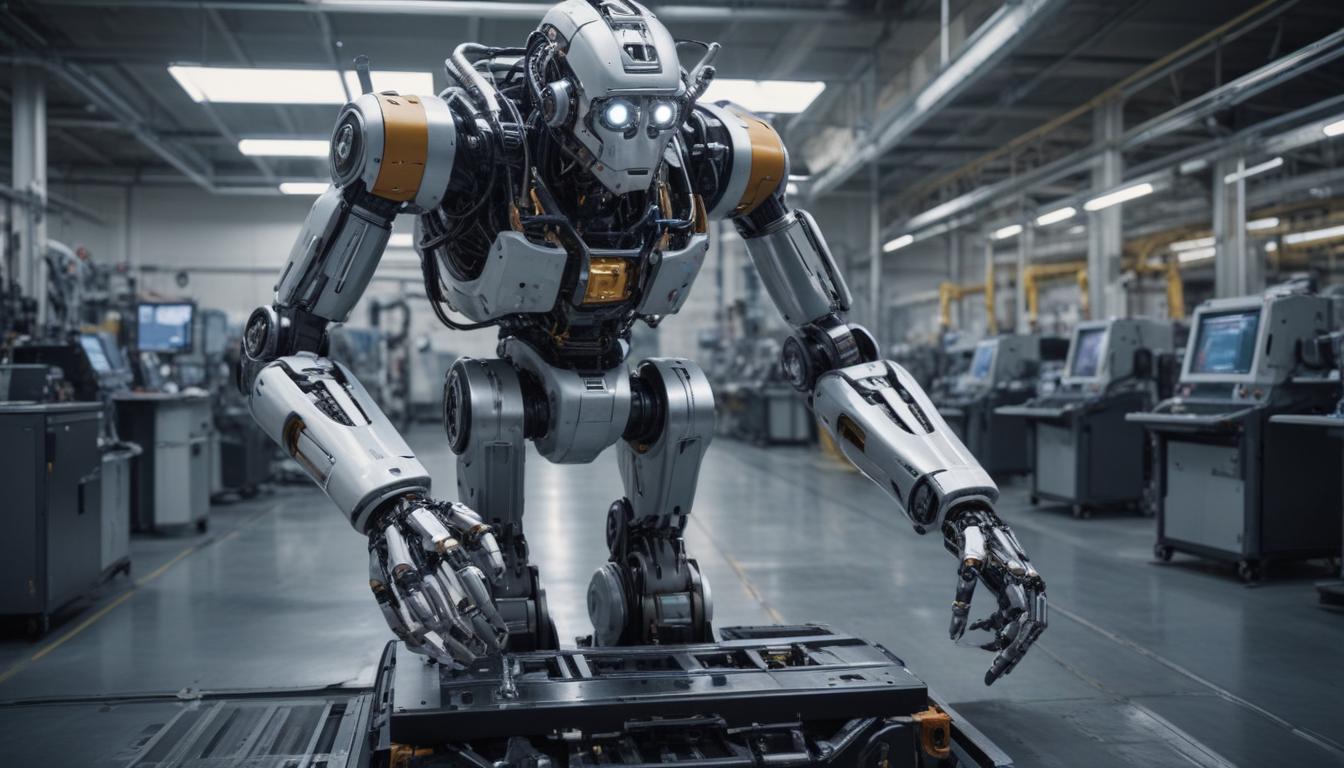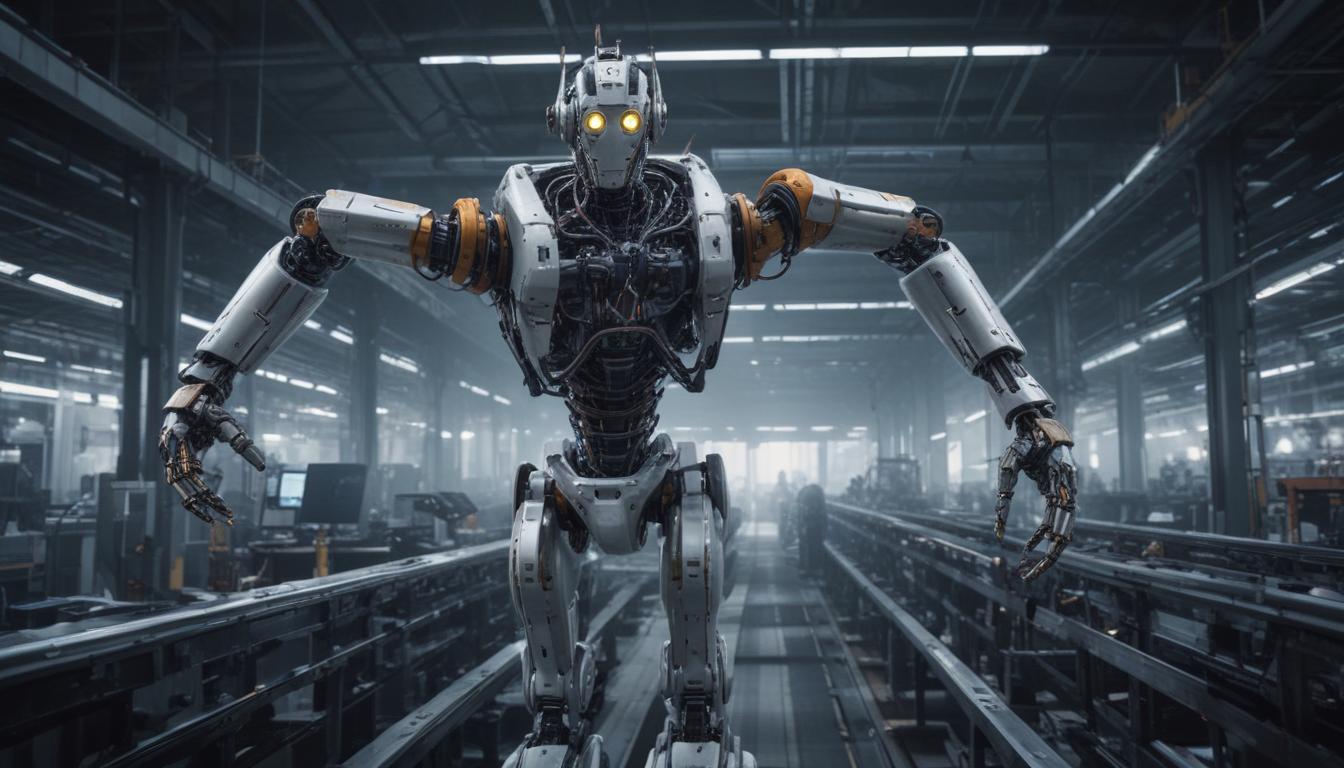Now Reading: Robots Revolutionize Industry
- 01
Robots Revolutionize Industry
Robots Revolutionize Industry

Robotics and Automation The Future of Industrial Efficiency
Are you feeling the constant pressure of rising operational costs, persistent labor shortages, and the relentless demand to improve efficiency just to stay competitive? You are not alone. Many business leaders find themselves struggling to keep pace, fearing they might be left behind in a rapidly evolving market. The answer isn’t simply about working harder; it’s about working smarter.
This is where robotics and automation step in. No longer a far-off futuristic concept, these technologies are practical, powerful solutions available today. They offer a clear path to overcoming modern business challenges, boosting productivity, and securing a decisive competitive edge. This guide will explore exactly how robotics and automation are revolutionizing industries, the incredible benefits they offer, and how you can begin your own journey toward a more efficient future.
What Are Robotics and Automation
Before we dive into their impact, let’s clarify what we mean by these terms.
Automation is the technology by which a process or procedure is performed with minimal human assistance. It’s about creating a system that can run on its own. Think of a software script that automatically sends out monthly invoices.
Robotics is a branch of engineering that involves the design, construction, and operation of robots. A robot is a programmable machine capable of carrying out a complex series of actions automatically.
Often, these two work together. Automation is the brain that sets the rules, and robotics is the physical body that carries out the tasks in the real world. Together, they are a force for incredible transformation.
The Unstoppable Impact Across Key Industries
The influence of robotics and automation is not confined to one sector. It is a widespread revolution, enhancing operations in nearly every field imaginable.
Manufacturing A New Era of Production
The factory floor is perhaps the most iconic setting for robotics. For decades, industrial robots have handled heavy lifting and repetitive tasks. Today, this has evolved significantly. Advanced robots perform high-precision tasks like welding, painting, and intricate assembly. Furthermore, collaborative robots, or “cobots,” are designed to work safely alongside human employees, taking over strenuous tasks while allowing people to focus on quality control and complex problem-solving.
Logistics and Warehousing Speed and Precision
The rise of e-commerce has put immense pressure on logistics and fulfillment centers. Automation is the only way to meet consumer demands for next-day delivery. Warehouses now use automated guided vehicles (AGVs) and autonomous mobile robots (AMRs) to transport goods. Robotic arms with advanced vision systems can pick, sort, and pack items with a speed and accuracy that is impossible for humans to sustain 24/7.
Healthcare Enhancing Patient Care
In the medical field, precision can be a matter of life and death. Robotics and automation are making healthcare safer and more effective. Surgical robots, like the famous da Vinci system, allow surgeons to perform minimally invasive procedures with greater control and accuracy. In laboratories, automation handles the sorting and analysis of samples, reducing the risk of human error and speeding up diagnostic times. Robotic exoskeletons are also helping patients regain mobility during physical therapy.
Agriculture Feeding the Future
To feed a growing global population, agriculture must become more efficient and sustainable. Automation is leading the charge. GPS-guided autonomous tractors can plow fields and plant seeds with perfect spacing. Drones equipped with sensors monitor crop health from above, identifying issues like pests or dehydration before they become widespread. Robotic systems are even being developed to carefully harvest delicate produce like strawberries and lettuce.

Core Benefits of Embracing Automation and Robotics
Implementing these technologies offers a clear and compelling return on investment. The advantages go far beyond simply getting work done faster.
Increased Productivity and Efficiency
This is the most obvious benefit. A robot does not need breaks, does not get tired, and can operate around the clock. This leads to a massive increase in output and allows a business to run operations 24/7 if needed.
Improved Quality and Consistency
Humans, no matter how skilled, can have off days. A machine will perform a programmed task the exact same way every single time. This consistency eliminates errors, reduces waste, and leads to a higher-quality final product.
Enhanced Workplace Safety
Many industrial jobs involve tasks that are dangerous, dull, or dirty. Automation allows robots to take over these roles. This includes handling hazardous materials, working in extreme temperatures, or performing repetitive motions that can lead to long-term strain injuries. This protects your most valuable asset your people.
Solving Labor Shortages
In many developed countries, businesses struggle to fill certain roles. Automation provides a reliable solution by filling these labor gaps, ensuring that production can continue uninterrupted regardless of fluctuations in the labor market.
Getting Started with Automation Your First Steps
The idea of implementing robotics can seem daunting, but the journey starts with a single step. You don’t need to automate your entire operation overnight.
Identify Repetitive Tasks
Begin by looking for the low-hanging fruit. What are the biggest bottlenecks in your workflow? Which tasks are the most repetitive, time-consuming, or prone to error? These are the perfect candidates for your first automation project.
Research and Consult
You are not in this alone. There are countless integrators and consultants who specialize in designing and implementing automation solutions for businesses of all sizes. Reach out to experts, explain your challenges, and let them help you find the right technology for your specific needs.
Start with a Pilot Project
Instead of a massive overhaul, begin with a small, manageable pilot project. Choose one process and automate it. This allows you to test the technology, train your team, and measure the return on investment on a smaller scale before committing to a larger rollout.
The Future is Automated
Robotics and automation are no longer optional for businesses that want to thrive. They are essential tools for building a more resilient, efficient, and competitive operation. This is not about replacing human workers, but rather empowering them by removing tedious work and allowing them to focus on creativity, strategy, and innovation. The technological revolution is here. The time to explore what automation can do for your industry is now, not to catch up, but to lead the way.


































